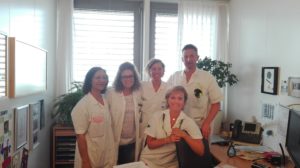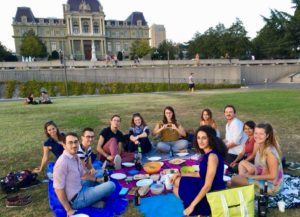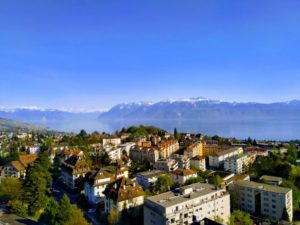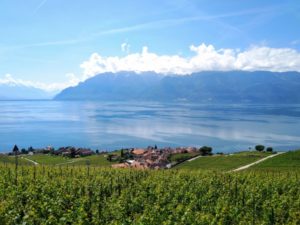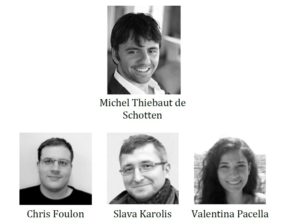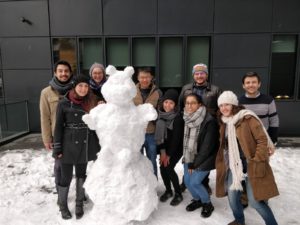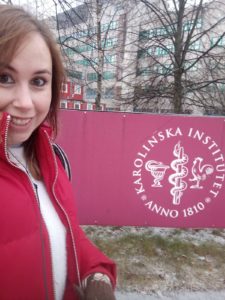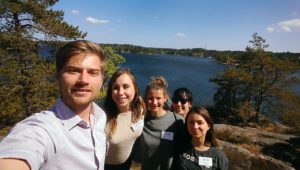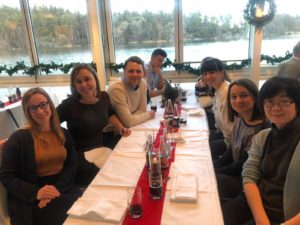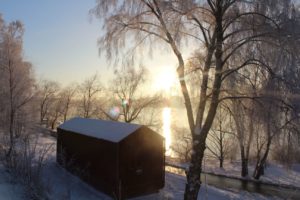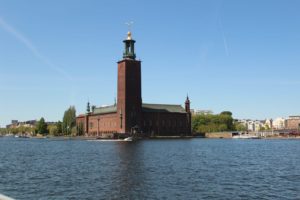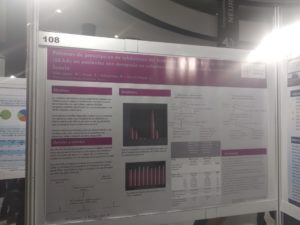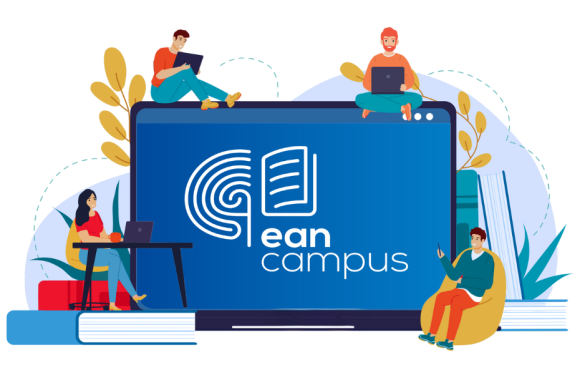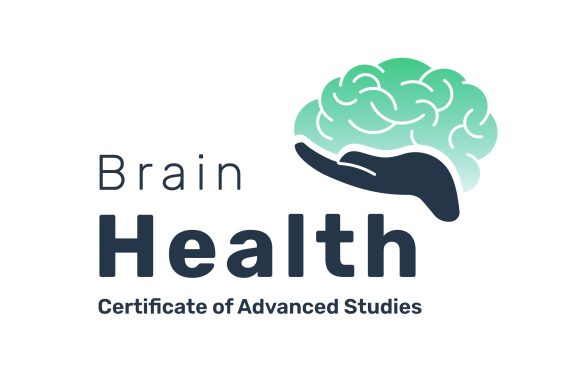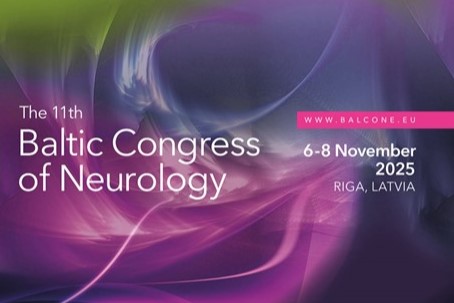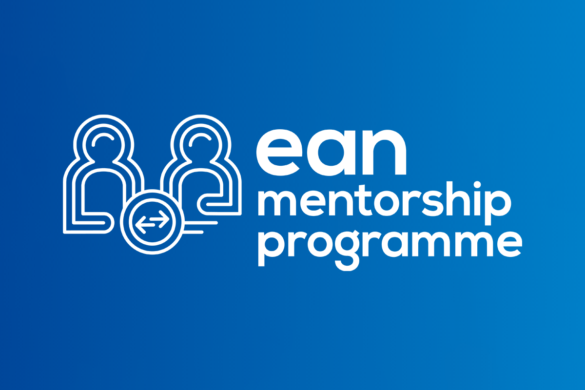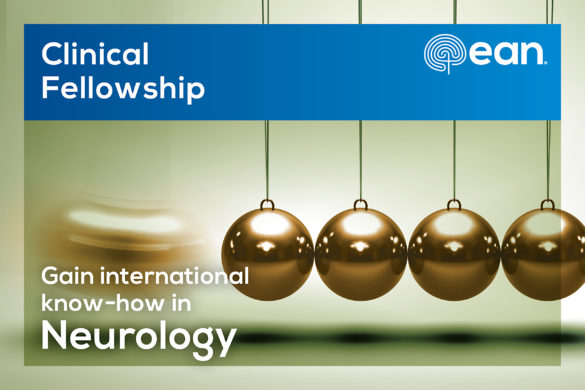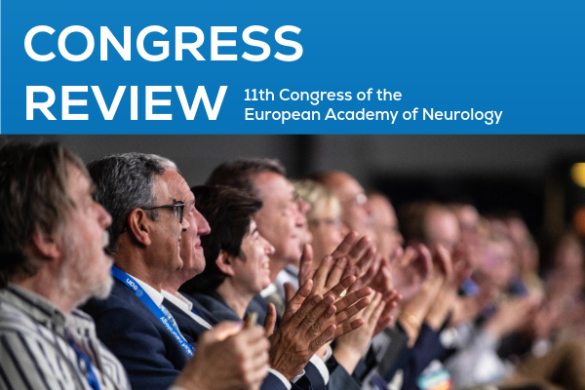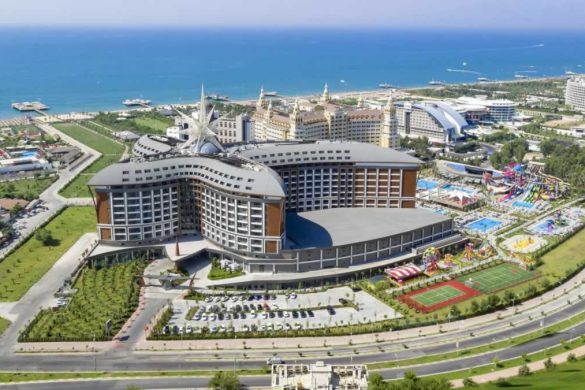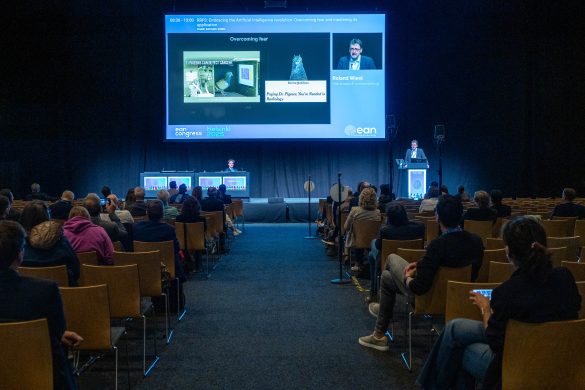Stefania Nannoni, MD, Florence, Italy
Hosting department: Stroke Center and Neurology Service, Department of Clinical Neurosciences, Lausanne University Hospital (Switzerland)
Supervisor: Prof. Patrik Michel
I had the opportunity to spend the one-year Research Training Fellowship at the Stroke Center of Lausanne University Hospital (Switzerland), working with Professor Patrik Michel and his research team.
After the completion of my neurology residency at the University of Florence (Italy), the fellowship allowed me to move to Lausanne for a successful experience abroad that I strongly recommend to all my colleagues.
During my stay at the Stroke Center, I worked on several research projects, mainly focused on multimodal CT-based assessment of acute ischemic stroke (AIS) patients. I used the Acute Stroke Registry and Analysis of Lausanne (ASTRAL), which included more than 4’000 acute ischemic stroke patients, as the main dataset to develop my projects. I studied cerebral collateralization of a large consecutive cohort of AIS patients, searching for clinical and radiological variables associated with better collaterals in the acute phase of stroke. Moreover, I analysed the role of collateral status in the determination of core and penumbra volumes on CT Perfusion. Prof Michel involved me in related projects of the clinical research team, focusing in predictors of penumbra salvage and infarct growth after a large occlusive anterior stroke.
I presented my scientific works at local and international scientific meetings, including the Annual Meeting of the Swiss Stroke Society 2018 (Lausanne) and the European Stroke Organization Conference 2018 (Gothenburg). I was delighted to attend the Stroke Winter School at Bern, on January 2018, where I met international specialists, learned about the most recent up-to-date research topics on stroke, and shared my experience with colleagues from other countries.
On a clinical level, I regularly worked at the stroke outpatient clinic, including the TIA clinic, and I frequently went to the emergency room to visit stroke patients eligible for recanalization therapy. I was able to participate in a large number of ongoing clinical trials for ischemic stroke, both in the acute setting and in the secondary prevention. I followed weekly clinical rounds and teaching courses of the Department of Clinical Neuroscience, in which challenging neurological cases were presented and discussed by a large group of residents and specialists.
From a personal point of view, it was a pleasure to spend this time in a historical and multicultural city as Lausanne. At the Stroke Center and Neurology Service I had the opportunity to work with inspirational colleagues that encouraged me to pursue with my career as a clinical researcher. Indeed, this fellowship was the starting point of a PhD program in Clinical Neuroscience that I am currently enrolled in at the University of Lausanne.
I am truly grateful to Professor Patrik Michel for his kind and precise supervision and to all his research team for their support during my time in Lausanne. Finally, I would like to thank the European Academy of Neurology for having granted me this wonderful opportunity.
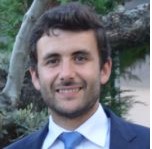 Pedro Nascimiento Alves, Portugal
Pedro Nascimiento Alves, Portugal
Hosting department: Brain Connectivity and Behaviour Laboratory, FrontLab, Institute of Brain and Spinal Cord, Paris, France
Supervisor: Professor Michel Thiebaut de Schotten
My fellowship at the Brain Connectivity and Behaviour Laboratory (BCB Lab) was an amazing and extremely valuable experience. The BCB Lab is part of FrontLab – Institute of Brain and Spinal Cord and is located in the complex of the Hôpital Pitié Salpêtrière, in Paris. My supervisor was Professor Michel Thiebaut de Schotten, who is also the director of the BCB Lab.
BCB Lab develops high quality research on the relationship between behaviour and neuroimaging in healthy and disease states, with a special focus on connectivity. The participation on the activities of the lab allowed me to develop scientific methodologies and to learn neuroimaging techniques that are being determinant in my career. I had the opportunity to work with tractography, functional connectivity and advanced procedures of brain imaging alignment. With this knowledge I could improve my own scientific projects and become a better researcher.
In a more personal point of view, it was also an extremely positive experience. My lab colleagues received very well and became good friends. This team spirit went beyond the lab, so that we met frequently after work and I could learn more about the cultural and social life of Paris.
I am very grateful to Professor Michel Thiebaut de Schotten and to his team. He generously taught me a lot of things and allowed me to perform a very interesting research project. Most importantly, he was a model to me of how to be a remarkable scientist.
I would like to thank the European Academy of Neurology for providing this grant to me.
Marta Villa Lopez
I am deeply grateful to the European Academy of Neurology for this fantastic opportunity. From the very beginning of my career, even before my residency, I was very interested in getting involved in research. The fact that during our medical residency we have to focus on our clinical abilities made it extremely difficult to aim towards this goal during those years. This fellowship has allowed me to much better understand how the field of research field functions, reinforcing the idea that clinical work and research projects must work together.
Along the course of this year, I have been fortunate to collaborate with a leading group in epidemiological research in dementia in Sweden, where they have a really meticulous organization and experience in quality registries. Because of their incredibly large and above-standard database, the scientific excellence of their publications and their experience in training other PhD students; I strongly believe that I could not have had a better way to initiate my research career.
Because of some inconveniences with the databases, we needed to redefine the topic of my research, although the specific aims remained the same and they have all been achieved by a wide margin. The main subject then changed to the interesting idea of focusing on the benefits of some antihypertensive drugs in patients with dementia.
During the first months of my stay, I thoroughly reviewed previous scientific literature on this subject while getting familiar with the main database (SveDem) and its variables. The result of the evidence supports a potential benefit with Renin Angiotensin inhibitors (RASi) in patients with dementia, made it possible for me to collaborate as a second author for an article in a high impact factor medical journal. This article was a review connecting cholesterol and renin-angiotensin system and the potential benefits of drugs targeting these two systems in cognition in patients with dementia.
After my collaboration with this review, I totally focused on learning basic statistics by way of some courses and attending lectures for this aim that they have in Karolinska Institute for PhD students. By the middle of my stay, I was able to:
- Conduct a literature search about some specific topic and knowing how to write a review article.
- Clean out databases and preparing them for analysis.
- Conduct descriptive analyses
- Manage SPSS syntax for basic analyses.
During that time, I was working on defining prescription patterns of the drugs I was interested in and sent an abstract that was accepted and presented at the Spanish Annual Meeting of Neurology. After that, I started to deepen my knowledge on statistics by moving to more complex models such as logistic regression and survival models. I have been working throughout the fall and winter on an article about mortality in patients with dementia on RASi and the article will be soon ready for submission. At this moment, other than the previous objectives, I also feel capable of:
- Critically evaluating the appropriateness of the chosen statistical method for different purposes
- Basic programming with SAS
- Understanding propensity score matching models
- Performing logistic regression models independently and selecting variables to include.
- Understanding survival models and running them with some statistical advice
- Understanding the theoretical basis of linear mixed models.
The knowledge of statistics this fellowship has given to me made it possible for me to improve the quality of my master’s thesis (Masters in Neuroscience) that I successfully defended in July. After the success of this defense, and thanks to the support and encouragement of my main supervisor of the fellowship, I have defined a new long term and ambitious goal, to enroll as a PhD student at the Complutense University of Madrid.
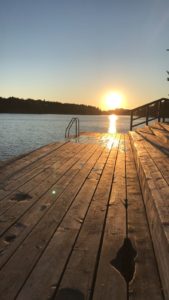 All this amazing work would not have been possible without the support of the fabulous team of SveDem. Starting from the patients and families who generously shared their information with us, the people involved in the huge administrative task that SveDem involves, and the researchers and PhD students working on this data and helping me dealing with the database. I truly appreciate my principal supervisor, Dr, Sara García-Ptacek, and the Head of the department, Dr. Mia Eriksdotter for their trust in me and their support. Sara has been a peerless supervisor I have been blessed to work with. Not only did she support me from the first moment by monitoring my learning and aiding me when I was stuck, but she really helped me to acclimatize to Swedish life and getting to know its culture. She was extremely generous in supporting my learning of basic Swedish, my attendance at conferences and encouraging me to grow professionally. Her ambition and her passion have really inspired me, and I will never be able to thank her enough for the change she has made to my career. I would highly recommend this experience for every young neurologist who wants to be involved in research.
All this amazing work would not have been possible without the support of the fabulous team of SveDem. Starting from the patients and families who generously shared their information with us, the people involved in the huge administrative task that SveDem involves, and the researchers and PhD students working on this data and helping me dealing with the database. I truly appreciate my principal supervisor, Dr, Sara García-Ptacek, and the Head of the department, Dr. Mia Eriksdotter for their trust in me and their support. Sara has been a peerless supervisor I have been blessed to work with. Not only did she support me from the first moment by monitoring my learning and aiding me when I was stuck, but she really helped me to acclimatize to Swedish life and getting to know its culture. She was extremely generous in supporting my learning of basic Swedish, my attendance at conferences and encouraging me to grow professionally. Her ambition and her passion have really inspired me, and I will never be able to thank her enough for the change she has made to my career. I would highly recommend this experience for every young neurologist who wants to be involved in research.

